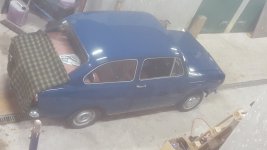Hi Guys,
First time poster!
I have an 850 Berlina and it was running a little hot, I took out the thermostat and it's now staying well below the middle mark/barely registering. Car is in Ireland, weather isn't the warmest so this too may be aiding in the cooling.
Is it ok to run it this way without the thermostat and just let it run cool?
I have taken out the radiator, flushed it and back flushed it with a hose, soaked it with warm water and vinegar, blew out the vanes with compressed air and a light power wash, flushed the engine and also cleaned the fan blades as they were caked with gunk. the airflow through the rad felt from underneath is dramatically different now, it's seriously moving air! The engine bay has the all important bottom trays also.
All is back together, car is running sweet but I was just wondering about running it with out the thermostat.
On a side note there is an element of white goo on the oil filler cap, not loads but it is present, the engine was rebuilt about five years ago but it has done little driving since, maybe about 150kms if even, so I would put the gunk down to condensation in the rocker cover.
Thanks!
Gavin
First time poster!
I have an 850 Berlina and it was running a little hot, I took out the thermostat and it's now staying well below the middle mark/barely registering. Car is in Ireland, weather isn't the warmest so this too may be aiding in the cooling.
Is it ok to run it this way without the thermostat and just let it run cool?
I have taken out the radiator, flushed it and back flushed it with a hose, soaked it with warm water and vinegar, blew out the vanes with compressed air and a light power wash, flushed the engine and also cleaned the fan blades as they were caked with gunk. the airflow through the rad felt from underneath is dramatically different now, it's seriously moving air! The engine bay has the all important bottom trays also.
All is back together, car is running sweet but I was just wondering about running it with out the thermostat.
On a side note there is an element of white goo on the oil filler cap, not loads but it is present, the engine was rebuilt about five years ago but it has done little driving since, maybe about 150kms if even, so I would put the gunk down to condensation in the rocker cover.
Thanks!
Gavin


